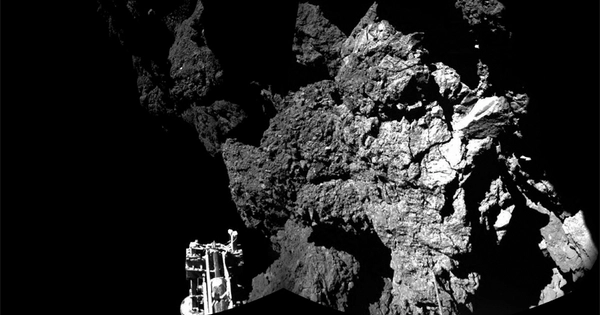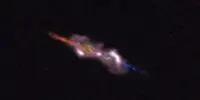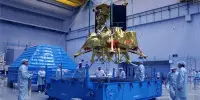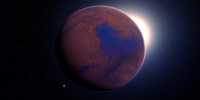For the first time, scientists discovered an unexpected abundance of complex organic molecules on a comet. This was accomplished through data analysis from the ESA’s Rosetta mission at comet 67P/Churyumov-Gerasimenko, also known as Chury. These organics, delivered to the early Earth by impacting comets, may have aided in the emergence of carbon-based life as we know it.
Comets are ancient fossils from the depths of our Solar System, as well as relics from the formation of the sun, planets, and moons. A team led by chemist Dr. Nora Hänni of the Physics Institute of the University of Bern’s Department of Space Research and Planetary Sciences has succeeded for the first time in identifying a whole series of complex organic molecules at a comet, according to a study published in the journal Nature Communications.
More precise analysis thanks to Bernese mass spectrometer
In the mid-1980s, the major space agencies launched a fleet of spacecraft to fly past Halley’s comet. Onboard were several mass spectrometers that measured the chemical composition of both the comet’s coma – the thin atmosphere caused by cometary ice sublimation close to the Sun – and impacting dust particles. However, the resolution of the data collected by these instruments was insufficient to allow for unambiguous interpretation.
Our findings are consistent with and support the scenario of a shared presolar origin of the various reservoirs of Solar System organics, confirming that comets do indeed carry material from long before our Solar System emerged.
Dr. Susanne Wampfler
More than 30 years later, data from comet 67P/Churyumov-Gerasimenko, also known as Chury, were collected by the high-resolution mass spectrometer ROSINA, a Bern-led instrument onboard ESA’s Rosetta spacecraft between 2014 and 2016. These findings enable the researchers to shed new light on Chury’s complex organic budget for the first time.
The secret was hidden in the dust
Chury became very active when it reached its perihelion, the closest point to the Sun. Cometary ices sublimated, causing outflow that dragged dust particles with it. Solar irradiation heated the expelled particles to temperatures higher than those found at the cometary surface. This allows larger and heavier molecules to desorb, making them accessible to the ROSINA-DFMS high-resolution mass spectrometer (Rosetta Orbiter Sensor for Ion and Neutral Analysis-Double Focusing Mass Spectrometer).
The astrophysicist Prof. em. Dr. Kathrin Altwegg, Principal Investigator of the ROSINA instrument and co-author of the new study, says: “Due to the extremely dusty conditions, the spacecraft had to retreat to a safe distance of a bit more than 200 km above the cometary surface in order for the instruments to be able to operate under steady conditions.” Hence, it was possible to detect species composed of more than a handful of atoms which had previously remained hidden in the cometary dust.
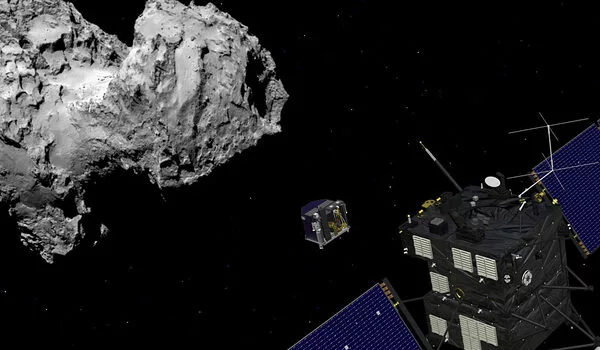
It is difficult to interpret such complex data. However, the Bernese team of researchers was successful in identifying a number of complex organic molecules that had never previously been found in a comet. “We discovered naphthalene, which is responsible for the distinctive smell of mothballs. We also discovered benzoic acid, a naturally occurring component of incense. In addition, we discovered benzaldehyde, which is commonly used to impart almond flavor to foods, as well as numerous other molecules.” According to Hänni, these heavy organics would make Chury’s scent even more complex, but also more appealing.
Apart from fragrant molecules, also many species with so-called prebiotic functionality have been identified in Chury’s organics budget (e.g., formamide). Such compounds are important intermediates in the synthesis of biomolecules (e.g., sugars or amino acids). “It therefore seems likely that impacting comets – as essential suppliers of organic material — also contributed to the emergence of carbon-based life on Earth,” explains Hänni.
Similar organics in Saturn and meteorites
In addition to identifying individual molecules, the researchers performed a detailed characterization of the entire ensemble of complex organic molecules in comet Chury, allowing it to be placed in the context of the larger Solar System. Parameters like this organic material’s average sum formula or the average bonding geometry of its carbon atoms are important to a wide range of scientists, from astronomers to Solar System scientists.
“It turned out that, on average, Chury’s complex organics budget is identical to the soluble part of meteoritic organic matter,” explains Hänni, adding: “Moreover, apart from the relative amount of hydrogen atoms, the molecular budget of Chury also strongly resembles the organic material raining down on Saturn from its innermost ring, as detected by the INMS mass spectrometer onboard NASA’s Cassini spacecraft.”
“We not only find similarities in the organic reservoirs in the Solar System, but many of Chury’s organic molecules are also present in molecular clouds, the birthplaces of new stars,” adds Prof. Dr. Susanne Wampfler, astrophysicist at the University of Bern’s Center for Space and Habitability (CSH) and co-author of the paper. “Our findings are consistent with and support the scenario of a shared presolar origin of the various reservoirs of Solar System organics, confirming that comets do indeed carry material from long before our Solar System emerged.”
